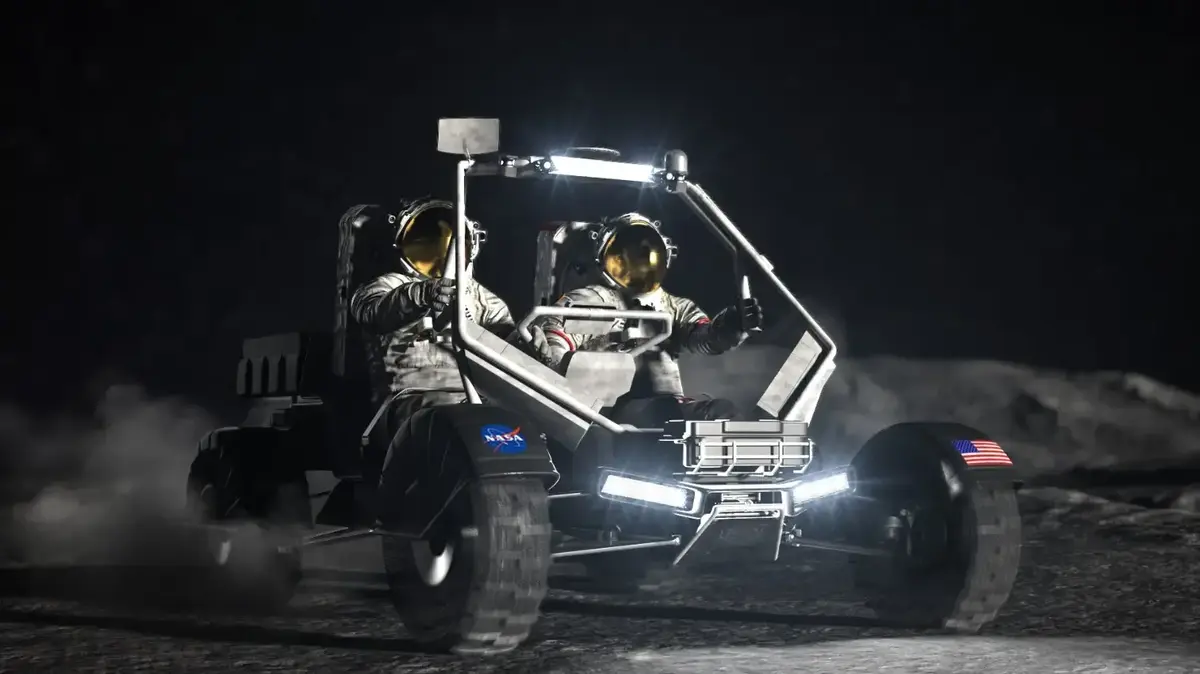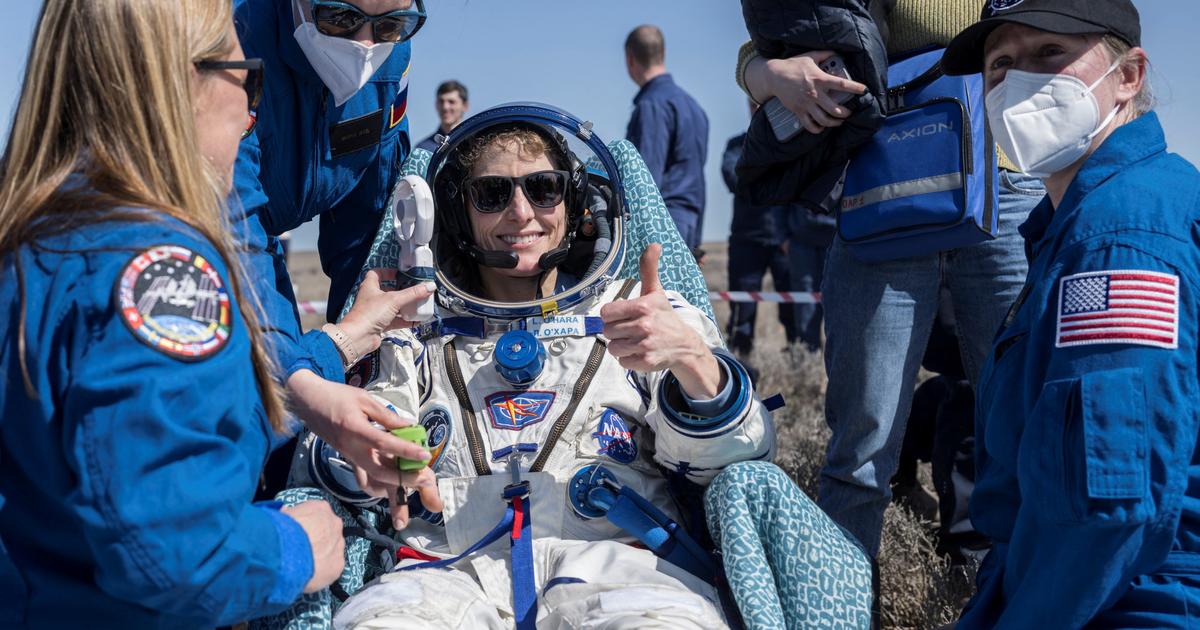Howard Hu was born in Shanghai, China, 53 years ago.
His parents emigrated to the United States and set up a restaurant.
Little Howard grew up splicing first jobs as a dishwasher and cook, while he thought that studying hard could be his passport to "a better life."
Around that time he saw
Star Wars
.
He was "the catapult of his career", because he understood that what he wanted most in the world was to build spaceships.
That dreamy kid is now head of NASA's Orion program, the new spacecraft that will take astronauts to the Moon and beyond.
Hu studied aeronautics and astronautics in Seattle, interned at NASA at age 22, and hasn't worked for anyone since.
He has actively participated in the agency's most emblematic programs, such as the space shuttles and the International Space Station, the only inhabited place beyond Earth.
The engineer leads a team of some 3,500 people both at NASA and at more than 800 supplier companies.
He has just visited Spain to meet with companies that have participated in the construction of the European spacecraft service module, developed by the European Space Agency, which provides air, water, electricity, propulsion and temperature control.
He taught them new data about the first Artemis 1
unmanned test mission
, which returned to Earth after orbiting the Moon for days in December last year.
In this interview, Hu outlines his imminent next goals, including making history by landing the first woman and first non-white person on the moon by 2025.
question
.
After
Artemis 1
, are you ready to send humans to the Moon?
Answer
.
The next thing is to test the new version of Orion in the
Artemis 2
mission , which will be a flight to the Moon without landing.
It will be the first time there is a crew: four astronauts.
In this mission we will test new occupant support systems such as oxygen and water supply and a new flight control system that includes all indicators, displays and guidance control.
It is very important that we test all this together with the rest of the systems that allow life to take place inside the ship.
Q.
_
What is it like to be inside the Orion?
R.
_
The space is like that of an SUV, a big car.
As you enter through the hatch, at your feet is the bathroom door, which is the size of a small phone booth.
There are two rows of two seats, one on top of the other, like bunk beds.
In the first two will go the commander and the pilot.
They will be able to see the entire control console, which will help them guide the ship.
Once in orbit, they will float weightlessly and the seats will fold up and stow away to make room.
It is a very cozy ship, with its kitchen to heat food and the bathroom in a separate room.
[This is the first time NASA has included something like this on a spacecraft to the Moon.
50 years ago, the Apollo astronauts, all men, urinated and defecated in bags, with no privacy].
Four spacesuited engineers sit in a replica of the Orion capsule, with the commander and pilot on the left.Robert Markowitz - NASA - Johnson Space Center
Q.
How long will the astronauts spend in the spacecraft?
A.
After taking off from the Kennedy Space Center, the spacecraft will remain in Earth orbit for 24 hours while we do all the checks and make sure everything is in order to continue.
Then we'll do a single engine start, which will take us straight to the Moon, we'll do a loop, and we'll come back.
All this will last between 10 or 12 days depending on the launch day.
It will be much shorter than
Artemis 1
, which lasted 25 and a half days.
We hope to launch this mission at the end of 2024.
Q.
And then there will be
Artemis 3
, in which a woman and a non-white person will set foot on the Moon for the first time in history.
It will be very different from when the Apollo astronauts arrived.
What exactly can we see during this mission?
A.
The first difference is going to be the size of the lander, called the Starship, which is huge in comparison [manufactured by Elon Musk's Space X company].
The Orion spacecraft will have to approach and anchor to that module in the orbit of the Moon.
Nothing like this has ever been done;
It will be one of the biggest challenges.
And of course we will not see videos in black and white and with a lot of grain, but high definition images.
The costumes will also be very different.
Q.
Of all the places on the Moon the cold and hostile south pole has been chosen to land, why?
A.
Water.
We believe that there is in the areas of perpetual shadow.
We think we'll be able to take ice cores and analyze them.
We could also obtain oxygen and hydrogen from water, which allows us to manufacture fuel and air to breathe in situ.
They would be the first steps towards future stations for the production of these compounds, which is essential, because bringing them from Earth is too expensive.
Also, there is a lot of interest from a geological point of view, because all the Apollo missions went to the lunar equator.
The Orion is set to bring 100 kilos of rocks back to Earth.
It is unimaginable all the science that we can do with this material.
Q.
How long will the astronauts be on the surface?
A.
About six days.
The first missions will be short and focused on science.
As of
Artemis 4
we will begin with the tasks of building permanent infrastructures so that the Moon can be inhabited for long periods: days, weeks, months.
This means creating modules where we generate energy, habitats for astronauts, logistics modules and exploration vehicles.
Q.
Will there be people living on the Moon permanently?
A.
Probably.
These are just the first steps.
artemis 4
and
5
will be the missions in which astronauts will first travel to the new lunar space station, Gateway, which will orbit the Moon.
Europe is building a good part of this station.
So that's where the Orions will arrive from Earth.
The astronauts will be able to spend seasons there and use another vehicle, the lander, to descend to the surface and return, as if it were a taxi.
And then they will take the Orion again to return to Earth.
It's a perfect solution that gives us constant access to the lunar surface.
At the same time, the exploration rovers, the living modules and the rest of the components of the surface bases will be lowered to the surface.
There will be power plants and communication systems.
The idea is to create a system of communication satellites on the Moon.
We will do all this together with our European partners,
Japanese, Canadian and companies from those and other countries.
That is what makes this project so powerful.
Q.
Critics of this program, including former President Donald Trump, say that "we've been there before";
why come back?
R.
We always talk about the Moon and beyond.
What we want is to go to Mars, but we have to test the necessary technology first.
What better than doing it in our backyard, the Moon?
Our satellite is about 380,000 kilometers away.
At its closest, the red planet is about 50 million kilometers from Earth.
It took us days to reach the Moon, instead of years.
We need to test nuclear fission as fuel, habitable bases, exploration vehicles, resource exploitation.
We also have to develop the industrial and business fabric.
And this is the way to do it.
We are going to the Moon and by that we are going I mean all of humanity.
Q.
Will the first manned missions to Mars be in the 2040s?
A.
It is difficult to know.
Remember when the Internet came.
At that time no one would have said that in a few years you could receive your purchases online through Amazon.
Now it's the same.
We are planting the seeds and we don't know how fast they will grow.
It could go by very fast.
Q.
Orion will be the ship that takes us to Mars?
R.
It will be part of the first expedition to Mars.
The ship now has the capacity to carry four people for 21 days.
Mars is much further away, it could be two years.
So we will be part of a more complex mission.
Certainly Orion will go beyond the Moon, but surely he will not go to Mars alone.
Q.
You mentioned that
Artemis 2
includes controllers for astronauts to take control, but will they normally go in automatic mode?
A.
The Orion can take off, complete the mission, and bring the crew back safely on its own, automatically.
But in
Artemis 2
we will have flight objectives in which astronauts will train manual handling.
The plan is for them to take control during the last phases of docking the ship, for example.
We will demonstrate and test these systems.
Q.
Did you dream of being an astronaut?
A.
Maybe it sounds strange, but my real dream was to be an engineer.
When I saw X-
wing starfighters
in
Star Wars
, I wanted to build those ships.
And now, miraculously, I'm leading the greatest spaceship ever.
Q.
How far do you think humans can go in manned exploration?
A.
I hope that history shows that this ship and these missions were the first step into the very distant future where we will be able to leave the solar system to get to those exoplanets that are being discovered that seem habitable.
You can follow
MATERIA
on
,
and
, or sign up here to receive
our weekly newsletter
.
Subscribe to continue reading
Read without limits
Keep reading
I'm already a subscriber








